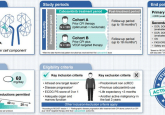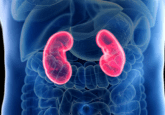Comparing EGFR tyrosine kinase inhibitor treatments in EGFR-mutated NSCLC across Asian and non-Asian patients: a plain language summary

Abstract
This is a summary of a review article that looked at how people from different ethnic populations respond differently to treatments for a type of lung cancer called non-small cell lung cancer (also known as NSCLC). EGFR tyrosine kinase inhibitors (often shortened to EGFR TKI treatments) are a form of treatment for NSCLC called EGFR mutation-positive NSCLC. There are currently five EGFR TKI treatments available, which are categorized based on when they were developed. First-generation EGFR TKI treatments were developed first, followed by second-generation and then third-generation. As different people respond differently to treatments, this review looked at data from clinical studies to investigate how first-, second- and third-generation EGFR TKIs are used to treat people with NSCLC from different ethnicities.
The results showed that second- and third-generation EGFR TKIs work better in treating people with NSCLC than first-generation TKIs in both Asian and non-Asian populations. However, it is still not clear whether second- or third-generation EGFR TKIs should be used as the initial treatment of choice for NSCLC, particularly in Asian patients. In one of the studies (called the FLAURA study), the third-generation EGFR TKI osimertinib improved overall survival (the length of time that patients survived, from first dose of treatment to death) when compared to first-generation EGFR TKIs. However, this was only seen in non-Asian people with NSCLC and not in Asian people with NSCLC. Saving osimertinib for second-line use (i.e., after the initial treatment has stopped working or becomes ineffective) may increase the duration of chemotherapy-free treatment, particularly in Asian patients.





